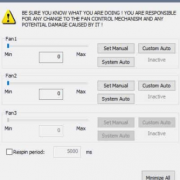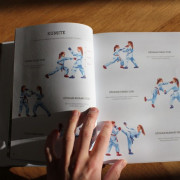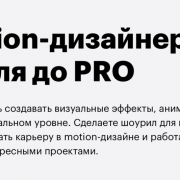Overview
Содержание:
- Community
- Important globals
- Important globals
- Grid options
- Глобально важно
- Какую версию Bootstrap выбрать
- Important globals
- Настраиваем размеры картинок
- Media queries
- Сетка и колонки
- Quick start
- Модули, navbars, и виртуальные клавиатуры
- Vertical alignment
- Anatomy
- Z-index
- Two Basic Bootstrap Pages
- Important globals
- Auto-layout columns
- Как это работает
- Community
- Bootstrap 5 vs. Bootstrap 3 & 4
- Валидаторы
- Что такое Bootstrap?
Community
Stay up to date on the development of Bootstrap and reach out to the community with these helpful resources.
- Read and subscribe to The Official Bootstrap Blog.
- Join the official Slack room.
- Chat with fellow Bootstrappers in IRC. On the server, in the channel.
- Implementation help may be found at Stack Overflow (tagged ).
- Developers should use the keyword on packages that modify or add to the functionality of Bootstrap when distributing through npm or similar delivery mechanisms for maximum discoverability.
You can also follow @getbootstrap on Twitter for the latest gossip and awesome music videos.
Important globals
Bootstrap employs a handful of important global styles and settings that you’ll need to be aware of when using it, all of which are almost exclusively geared towards the normalization of cross browser styles. Let’s dive in.
HTML5 doctype
Bootstrap requires the use of the HTML5 doctype. Without it, you’ll see some funky incomplete styling, but including it shouldn’t cause any considerable hiccups.
Responsive meta tag
Bootstrap is developed mobile first, a strategy in which we optimize code for mobile devices first and then scale up components as necessary using CSS media queries. To ensure proper rendering and touch zooming for all devices, add the responsive viewport meta tag to your .
You can see an example of this in action in the .
Box-sizing
For more straightforward sizing in CSS, we switch the global value from to . This ensures does not affect the final computed width of an element, but it can cause problems with some third-party software like Google Maps and Google Custom Search Engine.
On the rare occasion you need to override it, use something like the following:
With the above snippet, nested elements—including generated content via and —will all inherit the specified for that .
Learn more about box model and sizing at CSS Tricks.
Reboot
For improved cross-browser rendering, we use Reboot to correct inconsistencies across browsers and devices while providing slightly more opinionated resets to common HTML elements.
Important globals
Bootstrap employs a handful of important global styles and settings that you’ll need to be aware of when using it, all of which are almost exclusively geared towards the normalization of cross browser styles. Let’s dive in.
HTML5 doctype
Bootstrap requires the use of the HTML5 doctype. Without it, you’ll see some funky incomplete styling, but including it shouldn’t cause any considerable hiccups.
Responsive meta tag
Bootstrap is developed mobile first, a strategy in which we optimize code for mobile devices first and then scale up components as necessary using CSS media queries. To ensure proper rendering and touch zooming for all devices, add the responsive viewport meta tag to your .
You can see an example of this in action in the .
Box-sizing
For more straightforward sizing in CSS, we switch the global value from to . This ensures does not affect the final computed width of an element, but it can cause problems with some third party software like Google Maps and Google Custom Search Engine.
On the rare occasion you need to override it, use something like the following:
With the above snippet, nested elements—including generated content via and —will all inherit the specified for that .
Learn more about box model and sizing at CSS Tricks.
Reboot
For improved cross-browser rendering, we use Reboot to correct inconsistencies across browsers and devices while providing slightly more opinionated resets to common HTML elements.
Grid options
Bootstrap’s grid system can adapt across all six default breakpoints, and any breakpoints you customize. The six default grid tiers are as follow:
- Extra small (xs)
- Small (sm)
- Medium (md)
- Large (lg)
- Extra large (xl)
- Extra extra large (xxl)
As noted above, each of these breakpoints have their own container, unique class prefix, and modifiers. Here’s how the grid changes across these breakpoints:
| xs<576px | sm≥576px | md≥768px | lg≥992px | xl≥1200px | xxl≥1400px | |
|---|---|---|---|---|---|---|
| Container | None (auto) | 540px | 720px | 960px | 1140px | 1320px |
| Class prefix | ||||||
| # of columns | 12 | |||||
| Gutter width | 1.5rem (.75rem on left and right) | |||||
| Custom gutters | Yes | |||||
| Nestable | ||||||
| Column ordering |
Глобально важно
Bootstrap использует несколько важных глобальных стилей и настроек, о которых Вам нужно знать при его использовании. Все они почти исключительно направлены на нормализацию кроссбраузерных стилей. Давайте погрузимся.
Тип текущего документа
Bootstrap требует использования doctype HTML5. Без него Вы увидите несколько забавных неполных стилей, но его включение не должно вызывать каких-либо серьезных сбоев.
Адаптивный метатег
Bootstrap разработан mobile first (сначала мобильный), стратегия, в которой мы сначала оптимизируем код для мобильных устройств, а затем масштабируем компоненты по мере необходимости с помощью медиа-запросов CSS. Чтобы обеспечить правильный рендеринг и сенсорное масштабирование для всех устройств, добавьте метатег адаптивного окна просмотра (viewport) к Вашему .
Вы можете увидеть пример этого в действии в .
Свойство Box-sizing
Для более простого изменения размеров в CSS мы переключаем глобальное значение с на . Это гарантирует, что не влияет на окончательную вычисленную ширину элемента, но может вызвать проблемы с некоторым сторонним программным обеспечением, таким как Google Maps и Google Custom Search Engine.
В редких случаях Вам нужно переопределить его, используйте что-то вроде следующего:
В приведенном выше фрагменте все вложенные элементы, включая сгенерированный контент с помощью и будут наследовать указанный для этого .
Узнайте больше о коробочной модели и размерах на сайте CSS Tricks.
Перезагрузка
Для улучшения кроссбраузерности рендеринга мы используем Reboot, чтобы исправить несоответствия между браузерами и устройствами, обеспечивая при этом несколько более самоуверенный сброс общих элементов HTML.
Какую версию Bootstrap выбрать
Для разработки большинства веб-проектов лучше использовать последнюю версию Bootstrap в выбранной ветке.
На текущий момент:
- в v5 — это 5.1.3 (скачать);
- в v4 — это 4.6.1 (скачать);
- в v3 — это 3.4.1 (скачать).
Bootstrap 5 рекомендуется для проектов, которые будут использоваться только в современных браузерах (поддержка IE и других браузеров не нужна). В других случаях — Bootstrap 4.
Что нового в Bootstrap 5:
- нет зависимости от библиотеки jQuery, все плагины переписаны на чистом JavaScript;
- библиотека Popper обновлена до v2.x с v1.x;
- не поддерживаются Internet Explorer 10 и 11, Microsoft Edge <16, Firefox <60, Safari <10, iOS Safari <10, Chrome <60 и Android <6;
- добавлен новый брекпойнт в сетку ( для 1400px и выше);
- новые классы , и для указания горизонтальных и вертикальных отступов между ячейками;
- добавлен новый компонент offcanvas;
- удален компонент Media, его реализацию предлагают выполнять с помощью утилитных классов Bootstrap;
- улучшен раздел по формам в документации, и добавлена возможность создания в плавающего .
Третью версию в основном имеет смысл использовать, если нужна поддержка «старых» браузеров (IE8 и IE9).
Основные отличия Bootstrap 4 от Bootstrap 3:
- не поддерживает IE8, IE9 и iOS6 (v4 теперь только IE10+ и iOS7+);
- сетка и другие компоненты построены на флексах, а не на float;
- исходный код стилей написан на Sass, а не на Less;
- размеры, указываются в rem и em, а не в px;
- размер шрифта увеличен с 14px до 16px;
- увеличено количество брекпойнтов в сетки (в v4 — 5, в v3 — 4);
- удалены компоненты Panels, Thumbnails и Wells, вместо них добавлен Cards;
- удалены иконочный шрифт Glyphicons и jQuery плагин Affix;
- обновлены почти все компоненты;
- работа всплывающих подсказок (Tooltips) и блоков с контентов (Popovers) построена на библиотеке Popper JS.
Компоненты Bootstrap 3 в IE8 и некоторых других версиях отображаются без градиентов, теней и закруглённых углов. Это связано с тем, что в них нет поддержки используемых для этих целей CSS3 свойств.
Important globals
Bootstrap employs a handful of important global styles and settings that you’ll need to be aware of when using it, all of which are almost exclusively geared towards the normalization of cross browser styles. Let’s dive in.
HTML5 doctype
Bootstrap requires the use of the HTML5 doctype. Without it, you’ll see some funky incomplete styling, but including it shouldn’t cause any considerable hiccups.
Responsive meta tag
Bootstrap is developed mobile first, a strategy in which we optimize code for mobile devices first and then scale up components as necessary using CSS media queries. To ensure proper rendering and touch zooming for all devices, add the responsive viewport meta tag to your .
You can see an example of this in action in the .
Box-sizing
For more straightforward sizing in CSS, we switch the global value from to . This ensures does not affect the final computed width of an element, but it can cause problems with some third party software like Google Maps and Google Custom Search Engine.
On the rare occasion you need to override it, use something like the following:
With the above snippet, nested elements—including generated content via and —will all inherit the specified for that .
Learn more about box model and sizing at CSS Tricks.
Reboot
For improved cross-browser rendering, we use Reboot to correct inconsistencies across browsers and devices while providing slightly more opinionated resets to common HTML elements.
Настраиваем размеры картинок
Чтобы на разных экранах картинки выглядели хорошо, давайте сделаем так, чтобы на средних экранах все коты были одного размера, а на маленьких — выстраивались одни под другими. Для этого изменим наш прошлый блок таким образом:
Мы для каждой картинки добавили описание размеров блока для каждого размера экрана и разберём его на примере первой картинки. Теперь, если экран очень маленький () или просто маленький (), то первый блок с котиком займёт все 12 ячеек, то есть всю ширину. Если экран среднего размера () — то 4 ячейки, а если большой () или очень большой () — то пусть кот занимает по 2 ячейки.
Для второй картинки действуют те же самые правила, но размер кота на больших и очень больших экранах другой — 8 ячеек. Третья картинка настраивается точно так же, как и первая
Обратите внимание: чтобы на средних экранах получить одинаковый размер картинок, мы в описание каждой из них добавили одну и ту же команду col-md-4, которая каждому коту даёт 4 колонки, чтобы все были одного размера.
Вот что получилось в итоге — мы никак не программировали все вычисления размера экрана, подгонку под них изображений, не запрашивали постоянно, поменялся ли размер — за нас всё делал Бутстрап. Мы просто сказали ему, какого размера хотим видеть каждый блок, и всё — дальше работала магия фреймворка!
Media queries
Since Bootstrap is developed to be mobile first, we use a handful of media queries to create sensible breakpoints for our layouts and interfaces. These breakpoints are mostly based on minimum viewport widths and allow us to scale up elements as the viewport changes.
Min-width
Bootstrap primarily uses the following media query ranges—or breakpoints—in our source Sass files for our layout, grid system, and components.
These Sass mixins translate in our compiled CSS using the values declared in our Sass variables. For example:
Max-width
We occasionally use media queries that go in the other direction (the given screen size or smaller):
These mixins take those declared breakpoints, subtract from them, and use them as our values. For example:
Why subtract .02px? Browsers don’t currently support , so we work around the limitations of and viewports with fractional widths (which can occur under certain conditions on high-dpi devices, for instance) by using values with higher precision.
Single breakpoint
There are also media queries and mixins for targeting a single segment of screen sizes using the minimum and maximum breakpoint widths.
For example the will result in :
Сетка и колонки
Бутстрап для себя делит экран на 12 колонок, независимо от размера экрана. Даже маленький экран старого телефона Бутстрап разобьёт на 12 колонок и будет ими управлять. На этом холсте вы можете создавать блоки шириной с какое-то количество колонок. Например, чтобы написать текст на половину ширины экрана, нужно создать блок шириной 6 колонок.
Блоки живут не сами по себе, а как бы в таблицах. Вы говорите Бутстрапу: «Создай мне контейнер для блока, в контейнере — строку, внутри строки — колонку, а внутрь колонки — положи этот текст». Сейчас это выглядит странно, но позже вы привыкнете.
Строка заполняется ячейками слева направо. Когда кончается строка, можно создать новую строку и снова заполнить её ячейками разной ширины. Ширина ячеек выражается в колонках. Ячейка шириной на весь экран будет иметь ширину 12 колонок, на пол-экрана — 6 колонок. Чтобы разбить экран на три части по горизонтали, нужно 3 ячейки шириной по 4 колонки. Чтобы сделать сетку, как у обычного трёхколоночного сайта, попробуйте три ячейки: 2 колонки, 8 колонок, 2 колонки.
Можно сказать Бутстрапу: «Когда экран маленький, эту колонку выводи на всю ширину, а ту вообще прячь». Например, у нас в левой колонке было меню сайта, в центральной — основной текст, а в правой — всякие вспомогательные ссылки. Тогда говорим левой колонке на мобилке вывестись на всю ширину, основной колонке — тоже на всю ширину, а правой — скрыться. Получится мобильная версия сайта.
И так можно долго куражиться. Если интересно, прочитайте документацию по сеткам Бутстрапа — там всё понятно по картинкам.
Quick start
Looking to quickly add Bootstrap to your project? Use jsDelivr, a free open source CDN. Using a package manager or need to download the source files? Head to the downloads page.
JS
Many of our components require the use of JavaScript to function. Specifically, they require jQuery, Popper.js, and our own JavaScript plugins. We use jQuery’s slim build, but the full version is also supported.
Place one of the following s near the end of your pages, right before the closing tag, to enable them. jQuery must come first, then Popper.js, and then our JavaScript plugins.
Bundle
Include everything you need in one script with our bundle. Our and include Popper, but not jQuery. For more information about what’s included in Bootstrap, please see our section.
Components
Curious which components explicitly require jQuery, our JS, and Popper.js? Click the show components link below. If you’re unsure about the page structure, keep reading for an example page template.
Show components requiring JavaScript
- Alerts for dismissing
- Buttons for toggling states and checkbox/radio functionality
- Carousel for all slide behaviors, controls, and indicators
- Collapse for toggling visibility of content
- Dropdowns for displaying and positioning (also requires Popper.js)
- Modals for displaying, positioning, and scroll behavior
- Navbar for extending our Collapse plugin to implement responsive behavior
- Toasts for displaying and dismissing
- Tooltips and popovers for displaying and positioning (also requires Popper.js)
- Scrollspy for scroll behavior and navigation updates
Переполнение и прокрутка
Поддержка на элемент весьма ограничен в iOS и Android. С этой целью, когда вы прокрутите мимо верхней или нижней части модального в любом из браузеров этих устройств, в контент начнет прокручиваться. Смотрите Хром ошибка № 175502 (исправлено в Chrome и V40) и В WebKit ошибка #153852.
текстовых полей iOS и прокрутки
Начиная с iOS 9.3, в то время как модальные открыт, если начальное касание прокрутки жест в пределах границы текста или В содержание под модальным будет прокручиваться вместо модальных себя. Смотрите В WebKit ошибка № 153856.
Виртуальная клавиатура
Обратите внимание — если вы используете форму ввода в модальном окне или навигации, iOS имеет ошибку отображения, через которую не обновляется позиция фиксированных элементов при вызова виртуальной клавиатуры. Существуют некоторые обходные пути для этого, в том числе — трансформирующие элементы , или при выявлении фокуса на элементе вызывают таймер и пробуют исправить это вручную
Bootstrap не обрабатывает такие ошибки, так что вам нужно самим это решить.
Меню Навигации
Элемент не используется на iOS в навигации из-за сложности с z-index. Таким образом, чтобы закрыть выпадающие меню, необходимо просто нажать элемент выпадающего (или ).
Vertical alignment
Table cells of are always vertical aligned to the bottom. Table cells in inherit their alignment from and are aligned to the the top by default. Use the vertical align classes to re-align where needed.
| Heading 1 | Heading 2 | Heading 3 | Heading 4 |
|---|---|---|---|
| This cell inherits from the table | This cell inherits from the table | This cell inherits from the table | This here is some placeholder text, intended to take up quite a bit of vertical space, to demonstrate how the vertical alignment works in the preceding cells. |
| This cell inherits from the table | This cell inherits from the table | This cell is aligned to the top. | This here is some placeholder text, intended to take up quite a bit of vertical space, to demonstrate how the vertical alignment works in the preceding cells. |
Anatomy
Table head
Similar to tables and dark tables, use the modifier classes or to make s appear light or dark gray.
| # | First | Last | Handle |
|---|---|---|---|
| 1 | Mark | Otto | @mdo |
| 2 | Jacob | Thornton | @fat |
| 3 | Larry | the Bird |
| # | First | Last | Handle |
|---|---|---|---|
| 1 | Mark | Otto | @mdo |
| 2 | Jacob | Thornton | @fat |
| 3 | Larry | the Bird |
Captions
A functions like a heading for a table. It helps users with screen readers to find a table and understand what it’s about and decide if they want to read it.
| # | First | Last | Handle |
|---|---|---|---|
| 1 | Mark | Otto | @mdo |
| 2 | Jacob | Thornton | @fat |
| 3 | Larry the Bird |
You can also put the on the top of the table with .
| # | First | Last | Handle |
|---|---|---|---|
| 1 | Mark | Otto | @mdo |
| 2 | Jacob | Thornton | @fat |
| 3 | Larry | the Bird |
Z-index
Several Bootstrap components utilize , the CSS property that helps control layout by providing a third axis to arrange content. We utilize a default z-index scale in Bootstrap that’s been designed to properly layer navigation, tooltips and popovers, modals, and more.
These higher values start at an arbitrary number, high and specific enough to ideally avoid conflicts. We need a standard set of these across our layered components—tooltips, popovers, navbars, dropdowns, modals—so we can be reasonably consistent in the behaviors. There’s no reason we couldn’t have used + or +.
We don’t encourage customization of these individual values; should you change one, you likely need to change them all.
To handle overlapping borders within components (e.g., buttons and inputs in input groups), we use low single digit values of , , and for default, hover, and active states. On hover/focus/active, we bring a particular element to the forefront with a higher value to show their border over the sibling elements.
Two Basic Bootstrap Pages
The following example shows the code for a basic Bootstrap page (with a responsive fixed width container):
Example
<!DOCTYPE html><html lang=»en»><head> <title>Bootstrap Example</title> <meta charset=»utf-8″> <meta name=»viewport» content=»width=device-width, initial-scale=1″> <link rel=»stylesheet» href=»https://maxcdn.bootstrapcdn.com/bootstrap/3.4.1/css/bootstrap.min.css»>
<script src=»https://ajax.googleapis.com/ajax/libs/jquery/3.5.1/jquery.min.js»></script>
<script src=»https://maxcdn.bootstrapcdn.com/bootstrap/3.4.1/js/bootstrap.min.js»></script>
</head><body><div class=»container»> <h1>My First Bootstrap Page</h1> <p>This is some text.</p> </div></body></html>
The following example shows the code for a basic Bootstrap page (with a full width container):
Example
<!DOCTYPE html><html lang=»en»><head> <title>Bootstrap Example</title> <meta charset=»utf-8″> <meta name=»viewport» content=»width=device-width, initial-scale=1″> <link rel=»stylesheet» href=»https://maxcdn.bootstrapcdn.com/bootstrap/3.4.1/css/bootstrap.min.css»>
<script src=»https://ajax.googleapis.com/ajax/libs/jquery/3.5.1/jquery.min.js»></script>
<script src=»https://maxcdn.bootstrapcdn.com/bootstrap/3.4.1/js/bootstrap.min.js»></script></head><body><div class=»container-fluid»> <h1>My First Bootstrap Page</h1> <p>This is some text.</p> </div></body></html>
❮ Previous
Next ❯
Important globals
Bootstrap employs a handful of important global styles and settings that you’ll need to be aware of when using it, all of which are almost exclusively geared towards the normalization of cross browser styles. Let’s dive in.
HTML5 doctype
Bootstrap requires the use of the HTML5 doctype. Without it, you’ll see some funky incomplete styling, but including it shouldn’t cause any considerable hiccups.
Responsive meta tag
Bootstrap is developed mobile first, a strategy in which we optimize code for mobile devices first and then scale up components as necessary using CSS media queries. To ensure proper rendering and touch zooming for all devices, add the responsive viewport meta tag to your .
You can see an example of this in action in the .
Box-sizing
For more straightforward sizing in CSS, we switch the global value from to . This ensures does not affect the final computed width of an element, but it can cause problems with some third-party software like Google Maps and Google Custom Search Engine.
On the rare occasion you need to override it, use something like the following:
With the above snippet, nested elements—including generated content via and —will all inherit the specified for that .
Learn more about box model and sizing at CSS Tricks.
Reboot
For improved cross-browser rendering, we use Reboot to correct inconsistencies across browsers and devices while providing slightly more opinionated resets to common HTML elements.
Auto-layout columns
Utilize breakpoint-specific column classes for easy column sizing without an explicit numbered class like .
Equal-width
For example, here are two grid layouts that apply to every device and viewport, from to . Add any number of unit-less classes for each breakpoint you need and every column will be the same width.
1 of 2
2 of 2
1 of 3
2 of 3
3 of 3
Setting one column width
Auto-layout for flexbox grid columns also means you can set the width of one column and have the sibling columns automatically resize around it. You may use predefined grid classes (as shown below), grid mixins, or inline widths. Note that the other columns will resize no matter the width of the center column.
1 of 3
2 of 3 (wider)
3 of 3
1 of 3
2 of 3 (wider)
3 of 3
Variable width content
Use classes to size columns based on the natural width of their content.
1 of 3
Variable width content
3 of 3
1 of 3
Variable width content
3 of 3
Как это работает
На высоком уровне, блочная система работает так:
- Существует три основных компонента—контейнера, строки и столбцы.
- Контейнеры— для фиксированной ширины или на полную ширину—центрирует содержание вашего сайта и помогает выровнять содержание блока.
- «Rows» — горизонтальные группы столбцов, которые обеспечивают чтобы столбцы выстроились правильно.
- Контент должен быть помещен в столбцах, и только колонки могут быть непосредственными потомками строк.
- Классы столбце указано количество столбцов, которые вы хотите использовать из 12 возможных в ряду. Так что если вы хотите три равные ширины столбцов, нужно использовать .
- Столбец устанавливаются в процентах, так они всегда изменчивый и размерами по отношению к родительскому элементу.
- Столбцы имеют горизонтальную для создания промежутка между отдельными столбцами.
- Есть пять грид уровней, по одному для каждой : сверхмалые, малые, средние, большие, и очень большие.
- Грид уровни основываются на минимальной ширине, то есть они применяются к ярусу и всем, кто выше его (например, применим для малых, средних, больших, и очень больших устройств).
- Вы можете использовать предопределенные грид классов или Sass примеси для более семантической разметки.
Звучит хорошо? Отлично, давайте перейдем посмотрев все это на примерах.
Community
Stay up to date on the development of Bootstrap and reach out to the community with these helpful resources.
- Follow @getbootstrap on Twitter.
- Read and subscribe to The Official Bootstrap Blog.
- Join the official Slack room.
- Chat with fellow Bootstrappers in IRC. On the server, in the channel.
- Implementation help may be found at Stack Overflow (tagged ).
- Developers should use the keyword on packages which modify or add to the functionality of Bootstrap when distributing through npm or similar delivery mechanisms for maximum discoverability.
You can also follow @getbootstrap on Twitter for the latest gossip and awesome music videos.
Bootstrap 5 vs. Bootstrap 3 & 4
This tutorial follows Bootstrap 3, which was released in 2013. However, we also cover newer versions; Bootstrap 4 (released 2018) and Bootstrap 5 (released 2021).
Bootstrap 5 is the newest version of Bootstrap;
with new components, faster stylesheets, more responsiveness etc. It supports the latest, stable releases of all major browsers and
platforms. However, Internet Explorer 11 and down is not supported.
The main differences between Bootstrap 5 and Bootstrap 3 & 4, is that
Bootstrap 5 has switched to JavaScript instead of jQuery.
Note: Bootstrap 3 and Bootstrap 4 is still supported by the team for critical bugfixes and documentation changes,
and it is perfectly safe to continue to use them. However, new features will NOT be added to
them.
Валидаторы
Для того, чтобы обеспечить наилучшие впечатления для старый и глючит браузеры, Bootstrap использует CSS хаки браузер в нескольких местах особые CSS на определенные версии браузеров, чтобы обойти ошибки в самих браузерах. Эти писаки понятно дело CSS валидаторы жаловаться на то, что они являются недействительными. В пару мест, мы также применяем ультрасовременные CSS функций, которые еще не полностью стандартизирована, но они используются исключительно для постепенного улучшения.
Эти предупреждения не имеют значения в практике, поскольку не вымышленная часть нашей CSS делает полной проверки и богатство порциями не препятствовать нормальному функционированию, не ломаные части, поэтому мы намеренно игнорируют эти предупреждения.
Что такое Bootstrap?
Bootstrap — это открытый и бесплатный HTML, CSS и JS фреймворк, который используется веб-разработчиками для быстрой вёрстки адаптивных дизайнов сайтов и веб-приложений.
Фреймворк Bootstrap используется по всему миру не только независимыми разработчиками, но иногда и целыми компаниями. На Bootstrap создано очень много различных сайтов, посмотреть их можно на странице Bootstrap Expo.
Основная область его применения – это фронтенд разработка сайтов и интерфейсов админок. Среди аналогичных систем (Foundation, UIkit, Semantic UI, InK и др.) фреймворк Bootstrap является самым популярным.
Почему Bootstrap так популярен? Это связано с тем, что он позволяет верстать сайты в несколько раз быстрее, чем на «чистом» CSS и JavaScript. А в нашем мире, время – это очень ценный ресурс. Ещё один его аспект – доступность. Она сводится к тому, что предоставляет возможность даже начинающему веб-разработчику (без глубоких знаний и достаточной практики) создавать достаточно качественные макеты.
Фреймворк Bootstrap – это набор набор CSS и JavaScript файлов. Чтобы его использовать эти файлы необходимо просто подключить к странице. После этого вам станут доступны инструменты данного фреймворка: колоночная система (сетка Bootstrap), классы и компоненты.
Как он работает? Например, чтобы создать кнопку на странице с помощью Bootstrap, достаточно к ссылке или элементу добавить всего несколько классов.
Создание кнопки в Bootstrap 5:
Ну как? Сколько на это потребовалось времени? Да, всего несколько секунд.
А если, например, нужно создать вкладки. Для этого необходимо всего лишь скопировать готовый HTML фрагмент, и отредактировать его так, чтобы в нём остался код для определённого количества вкладок:
Всё, вкладки готовы. На это тоже ушли считанные секунды. Правда, потрясающая скорость. В этом сила Bootstrap.
Но, Bootstrap – это не просто набор готовых инструментов (HTML фрагментов, классов, компонентов и плагинов), а хорошо спроектированный фронтенд фреймворк, который довольно просто можно настроить под себя посредством редактирования Sass переменных и использования миксинов.




